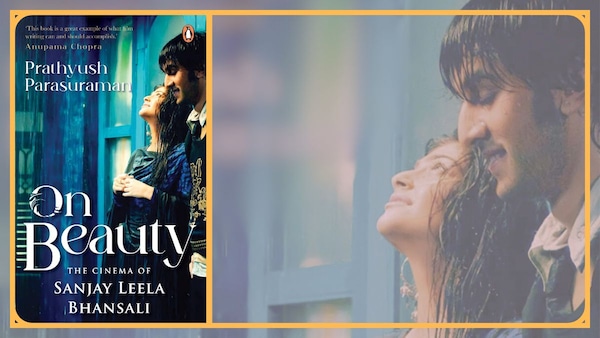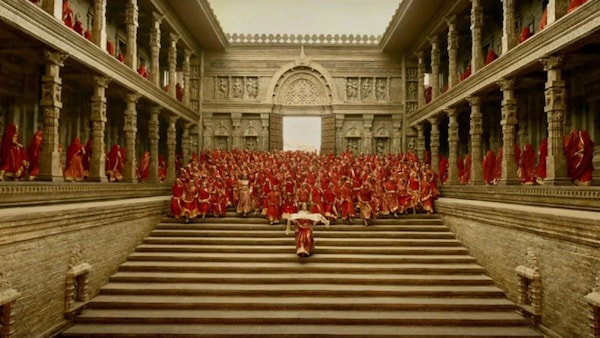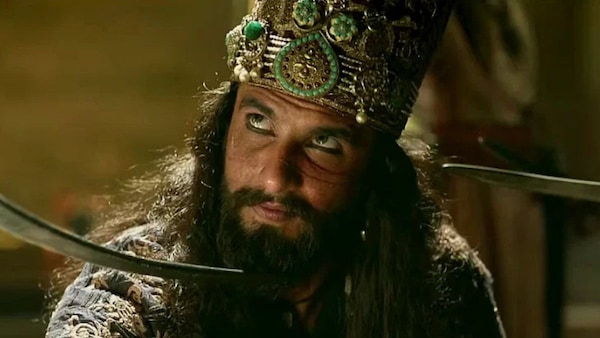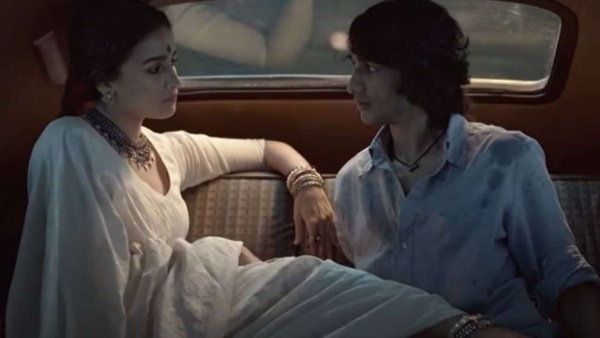Finding Beauty In Politics Of Sanjay Leela Bhansali's Filmverse
"In films, beauty matters. In his films, only beauty matters." Read an excerpt from On Beauty by Prathyush Parasuraman, exploring the aesthetics central to Sanjay Leela Bhansali's filmmaking.

Last Updated: 05.38 PM, Nov 06, 2024
The following excerpt from Prathyush Parasuraman's latest book On Beauty: The Cinema of Sanjay Leela Bhansali has been reproduced here with due permission of the publisher Penguin Random House India.
***
WHEN I say that in Bhansali’s films, only beauty matters, I am being extremely literal, not given to brash exaggeration or a grand gesture to dizzy you with the sweeping stance of my opinion.
Let me clarify this controversial pose with a controversy, looking at how the politics in his films have been discussed, and how those who have criticized Bhansali’s art for being conservative or Islamophobic or patriarchal often see his penchant for beauty in opposition to their liberal political beliefs for dignity and freedom.
In my reading of his films, politics seems so beyond his viewfinder, sometimes a political reading or reaction to his films feels odd. Odd, not because it isn’t valid or needed or, but because it is trying to give a film a political intention where none seems to exist—like trying to yank debris out of a vacuum or meaning out of beauty. The point of beauty is not to furnish meaning. Why forage for it, then?
Let us turn our gaze to Padmaavat (2018), his ninth and most expensive film based on the sixteenth-century epic poem by Malik Muhammad Jayasi. Set in the twelfth century, the film retells the folk legend of Rani Padmavati (Deepika Padukone), who, after the death of her husband, the Rajput king Ratan Singh (Shahid Kapoor) by the Delhi Sultan Alauddin Khilji (Ranveer Singh), decides to immolate herself so that Khilji never gets to possess her. The idea of self-immolation, sati or jauhar, a brutal act of a woman giving up her life to uphold a patriarchal standard of dignity and purity—to be untouched by the enemy—is an archaic idea that Bhansali had decided to rouge and razz with beauty.
In the climax, a sea of women, dressed in crimson— children, aged, pregnant, everyone—run into a growling, simmering, fort-high, numbering, computer-generated fire to commit jauhar, a crescendo, collective suicide, propelled by a haunting score and a strident slow motion that teases tension, allowing each flutter of the fabric to feel final. And it is precisely in the almost surreal beauty of the brutality, the artificiality of the fire itself, that the brutality is never allowed to state itself. Like watching women run into rust yellow pixels, the violence remains this ether-like idea.

This seems to be how he treats every situation. Often it is difficult to know if what we are submitting to is the emotional crust of the situation or its molten beauty. Even to this day, when Paro (Aishwarya Rai Bachchan) runs towards her lover, a dying Devdas (Shah Rukh Khan) at the end of Devdas, Bhansali’s third and most celebrated film, a slow-motion that is punched by Paro’s screeching, by the tension of the moment, her sari unfurling and like a white wave sculpted by the air, hovering, it is impossible to not be pounded into gooseflesh.
When you try to locate the source of this reaction, to psychologize this goose-fleshing, it is impossible to know if it is rooted in the emotional reach of the scene or the dramatic pyrotechnics of Bhansali’s cinema or Monty Sharma’s wailing score. It could be all three, of course. But more and more it seems, to me, that Bhansali’s beauty is like a stain on a shirt. It is not like the shirt doesn’t exist, it is just that your attention is always directed towards, hypnotized by, the stain.
So, it seemed impossible to see the moment in Padmaavat as one of horror, of feminism’s dying, sighing breath, because Bhansali frames it as beauty, as awe, as a spectacle, as a gleaming image to end his film with. When, in an open letter, actress and activist Swara Bhaskar emphatically noted, ‘Women have the right to live, despite being raped sir . . . Women are not only walking talking vaginas,’ it felt like the criticism was talking at cross-purposes with his cinema. That climax was never about women. It was about beauty.
This aestheticizing of everything—femininity, religion, trauma, history, desire—with a reckless irreverence towards ‘reality’, ‘realism’, ‘the present condition’ has produced his increasingly vacuum-sealed worlds. To criticize this escapism, however defensible, is an increasingly shrill and dull stroking of the chin, hand on the hip. There is a reason his films feel ‘timeless’, for by escaping the grounding demands of time and place, they escape the moral demands of that time and place, too.
Similarly, his treatment of Alauddin Khilji in Padmaavat as this monstrous, evil, sexualized beast who wants to possess Rani Padmavati, has been read as a rewriting of history, imposing present-day phobias and the trenchant representation of the Muslim as someone with an irresistible, irrepressible appetite, on the past. But the film, based on a folk tale, was never about history. It was about beauty.

For all my grumbling, my belief that his films are politically amphibious, you will point me in the direction of Bhansali giving, in a rare instance, a glimpse of his political proclivities. Here is Bhansali on Modi, the Prime Minister of India, who has reportedly brought to the surface, confidently, many of the xenophobic, Islamophobic tendencies that have always been simmering among us, ‘I like the fact that he has something to say and something to achieve and a practical agenda to follow. I need to be inspired. I need to follow you. I think he is astute and that is important for a leader. The ability to have people follow you is important. Charisma is important.’
With this quote floating about in your head, you must be asking me, can we not, then, extricate from Khilji’s demonization—a character—Bhansali’s demonization of the Muslim—an identity?
But what if you place this quote against a brief, sympathetic nod to Nehru in Gangubai Kathiawadi? Or even this dialogue from the film, taken from Sahir Ludhianvi’s lyrics for Pyaasa, ‘Madad chahti hai, ye Hawwa ki beti, Yashoda ki hum-jins, Radha ki beti, Payambar ki ummat, Zulaikhan ki beti, Jinhen naaz hai Hind par woh kahan hai’, bringing in Hindu, Islamic, Christian and Jewish characters into a plea? What do you make of that stately, kind, what Bhansali called ‘astute’, representation of our first Prime Minister? Or the rousing monologue on secularism and how religion has never chosen a colour in Bajirao Mastani? What about the villainization of the Brahmins as a community in that film?
For all the accusations of Islamophobia, there seems no mention of how in Saawariya, Urdu words like ‘jaan’ are calligraphed with Mumtaz Mahal portraits and Lakshmi murals painted in shades borrowed from Monet’s palette. The Ganga–Jamuna tehzeeb with a Hindu man pursuing a Muslim woman in Saawariya and Bajirao Mastani, or a Muslim man pursuing a Hindu woman in Gangubai Kathiawadi, can be read into as a progressive screech, but I believe these, too, are dull, decrepit readings, ignoring the surface to revel in something else, something easier— intended or constructed.

In his films, the subtext—that is, the discourse and material under the text, like hidden meanings, embedded metaphors, easter eggs—and the paratext—that is, the discourse and material around the text, like the promotions, the reviews, the night news debates—are far easier to glean than the text itself, which is an unsteady, slippery surface.
That his female protagonist is a Muslim not as much because he is so deeply moved by Muslim representation, or wants to resuscitate and mainstream their credo, as much as his imagination seems energized by the aesthetics of Islam—the turrets, the onion dome of a mosque, the qaleen weaving, the mashallah. This is not like the Manmohan Desai films of the ’70s, ’90s which forcefully included characters—however peripheral—from all religions to create this fictional tapestry that, hopefully, a secular country can feed off and recreate itself in the imprint of. If you see a character’s religion foregrounded in a Bhansali film, they come with their specific, iconographic beauty. The Mona Lisa curtain in a Christian household; the arches of a Muslim household; the Holi of a Hindu household; the pleated frocks of the Christian household.
Even in songs, his Christian character Annie from Khamoshi: The Musical calls God ‘khuda’, not in some solidifying pan-religious gesture of faith, but because the way the word sits in the song, lyrics by Majrooh Sultanpuri, gives it that poetic lift he desires. His films have always foregrounded what things look like over what things are. For us to, then, brush past the appearance to revel in meaning—intended, imposed—feels like hitting a flat note.
To look at Khamoshi: The Musical and think it normalizes pre-marital sex, to watch Guzaarish and think that the film advocates euthanasia, to see in Gangubai Kathiawadi a film that is protesting at the picket fence screaming for the legalization of sex work, or to view Heeramandi as touched by the fervour of anti-colonialism, is to read these films thematically, meekly, too excited by their progressive prospects and socialist sheen. This approach forgets that even the director views politics as an excuse for celebration, not emancipation. He is chasing beauty, and only beauty. The story is an excuse. The image is the priority.

Submitting to his films, then, requires being a sahridaya—the person capable of experiencing soundarya or beauty, aligning yourself with the protagonist, being able to pulsate with that same grace, that same beauty. To be completely rapt. To be rendered incapable of rationality, drowned by a submissive, visceral creep.
Why am I bringing up the idea of soundarya, of sahridaya? What about these specific words eludes a perfect translation into English?
In aesthetic theory, a branch of philosophy which burned up in the eighteenth century with the German philosopher Alexander Gottlieb Baumgarten, there is a distinction made between an aesthetic experience and an aesthetic judgement. The former would be what the Portuguese poet Fernando Pessoa described as ‘drifting without thoughts or emotions attending merely to my senses’.
Often what we fixate on is not the aesthetic experience but the aesthetic judgement—trying to condense what we feel into dispensable adjectives and puffy adverbs. This is how we now consume art, a consumption that is amenable to distillation.
